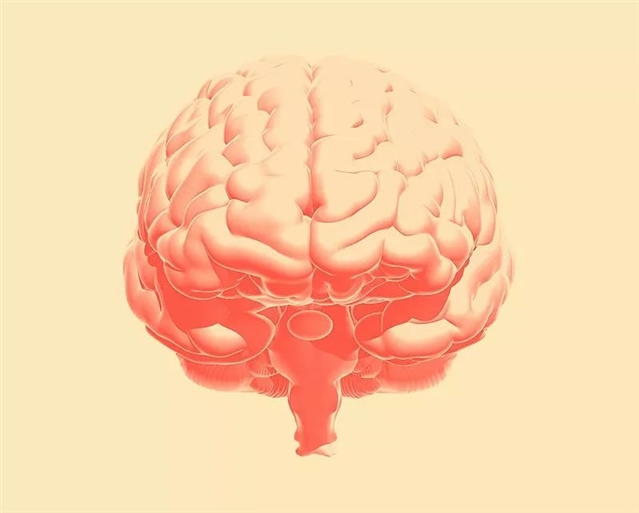|
|
|
|
|
脑震荡的严重程度可能取决于DNA | Acta Neuropathologica Communications |
|
|
论文标题:DNA repair deficiency and senescence in concussed professional athletes involved in contact sports
期刊:Acta Neuropathologica Communications
作者:Nicole Schwab, Karl Grenier et al.
发表时间:2019/11/14
DOI:10.1186/s40478-019-0822-3
微信链接:点击此处阅读微信文章
神经病理学家Lili-Naz Hazrati和Nicole Schwab解释了在遗传多样性的背景下,为何不同的人在脑震荡后会有不同的患神经退行性疾病的可能性。该成果近期发表在开放获取期刊Acta Neuropathologica Communications 上。

接触性运动可能会使运动员面临轻度创伤性脑损伤的风险,但是总有些人比其他人更抗得住这种风险。(图片来源:gilaxia/iStock)
每年约有一千万人会遭受创伤性脑损伤(traumatic brain injury,TBI),其中绝大多数属于轻度TBI(mild TBIs,mTBIs)。mTBIs通常被称为脑震荡,它有时会导致产生一系列症状,包括头痛、疲劳、焦虑、抑郁、以及记忆力和注意力方面的困难。
持续处于脑震荡之下会增加日后患神经退行性疾病的风险,但这并不是所有脑震荡病人的必然归宿。目前尚不清楚脑震荡是如何引起症状的,也不清楚为何有些人更易遭受或抵御脑震荡的影响。
有脑震荡史大脑内细胞水平的变化
在2019年11月14日发表在Acta Neuropathologica Communications 上的一项研究中,我们对38个捐献的人脑进行了分析,这些大脑的捐献者都曾因为参与接触性运动(例如美式足球,曲棍球,橄榄球和拳击)而有长期的轻度脑震荡史。

图片来源:Jolygon/Getty Images/iStock
我们的证据显示存在低效的DNA损伤修复和细胞衰老(即正常的细胞分裂发生不可逆转的停止),这可能是mTBI后大脑功能紊乱的病理生理学机制。我们认为这种现象可以解释为什么有些人比其他人更容易遭受或抵御脑震荡的影响。
我们评估了这些大脑中的DNA损伤程度、细胞衰老的免疫组织化学标志物和基因的表达。与同年龄的健康参与者相比,mTBI大脑的DNA损伤程度显著升高。在有脑震荡病史的大脑中,包括乳腺癌易感性1型(BRCA1)蛋白在内的关键性DNA损伤修复酶的表达显著下降。
根据以上结果,我们认为在具有脑震荡史的大脑中,DNA的修复机制效率低下,从而导致DNA损伤在脑中不断累积。
除了DNA损伤和DNA修复能力方面的变化,我们还发现具有mTBI史的大脑具有细胞衰老的标志性特征,即细胞周期永久性地停滞,其特征表现为慢性炎症和DNA损伤引发的基因组不稳定性,这种细胞周期的停滞导致了认知功能的下降、神经退行性疾病和衰老等症状。在我们的研究中,mTBI的大脑呈现出星形胶质细胞(中枢神经系统内的一种星形细胞)肿胀和特定核膜蛋白的缺失。

一组脑部核磁共振扫描图。图片来源:maciu17 / Getty Images / iStock
所有这些变化都是细胞衰老的特征,让人联想到遗传毒性应激和基因表达模式的改变。事实上,通过分析基因表达,我们发现与细胞周期停滞、衰老细胞的信号传导和已知由衰老细胞分泌的促炎因子有关的基因的表达显著增加。
综合来看,这些结果表明具有mTBI史的大脑中发生有细胞的衰老。
脑震荡病人的DNA损失和细胞衰老
这项研究表明,慢性脑震荡史与DNA修复酶的表达减少、DNA损伤负担增加和细胞衰老的标志物有关。这表明,脑震荡患者能否恢复良好取决于该患者有效修复DNA损伤的能力。
重要的一点是许多DNA修复酶是多态性的,这意味着他们是遗传可变的,并且在不同个体之间具有不同的表达模式。
再以BRCA1为例,已经证实在BRCA1基因中天然存在的点突变会增加患乳腺癌的风险。同理,DNA修复基因(例如BRCA1)的不同表达模式可能会使有些人由于脑中存在无效的DNA修复机制而更易受脑震荡的影响。

美式足球是一项容易造成轻度脑震荡的接触性运动。(图片来源:LightFieldStudios / Getty Images / iStock)
引申来讲,一些人也可能因为大脑中存在太过有效的DNA修复机制,从而在一些基因表达模式的作用下能更好地抵御头部创伤的影响。
虽然我们还不能完全理解DNA损伤和细胞衰老对脑震荡后果的影响机制,但我们相信这些结果可能因人而异。因此脑震荡的病理生理学是一个需要解决的复杂问题,因为每个人对相同的伤病可能会表现出不同的分子反应。
这意味着在体育运动中,我们可能无法实施“一刀切”的政策,在创伤性脑损伤的预防和治疗方面,我们需要满足每一个个体的需求。
摘要:
Mild traumatic brain injury (mTBI) leads to diverse symptoms including mood disorders, cognitive decline, and behavioral changes. In some individuals, these symptoms become chronic and persist in the long-term and can confer an increased risk of neurodegenerative disease and dementia diagnosis later in life. Despite the severity of its consequences, the pathophysiological mechanism of mTBI remains unknown. In this post-mortem case series, we assessed DNA damage-induced cellular senescence pathways in 38 professional athletes with a history of repeated mTBI and ten controls with no mTBI history. We assessed clinical presentation, neuropathological changes, load of DNA damage, morphological markers of cellular senescence, and expression of genes involved in DNA damage signaling, DNA repair, and cellular senescence including the senescence-associated secretory phenotype (SASP). Twenty-eight brains with past history of repeated mTBI history had DNA damage within ependymal cells, astrocytes, and oligodendrocytes. DNA damage burden was increased in brains with proteinopathy compared to those without. Cases also showed hallmark features of cellular senescence in glial cells including astrocytic swelling, beading of glial cell processes, loss of H3K27Me3 (trimethylation at lysine 27 of histone H3) and lamin B1 expression, and increased expression of cellular senescence and SASP pathways. Neurons showed a spectrum of changes including loss of emerin nuclear membrane expression, loss of Brahma-related gene-1 (BRG1 or SMARCA4) expression, loss of myelin basic protein (MBP) axonal expression, and translocation of intranuclear tau to the cytoplasm. Expression of DNA repair proteins was decreased in mTBI brains. mTBI brains showed substantial evidence of DNA damage and cellular senescence. Decreased expression of DNA repair genes suggests inefficient DNA repair pathways in this cohort, conferring susceptibly to cellular senescence and subsequent brain dysfunction after mTBI. We therefore suggest that brains of contact-sports athletes are characterized by deficient DNA repair and DNA damage-induced cellular senescence and propose that this may affect neurons and be the driver of brain dysfunction in mTBI, predisposing the progression to neurodegenerative diseases. This study provides novel targets for diagnostic and prognostic biomarkers, and represents viable targets for future treatments.
(来源:科学网)
特别声明:本文转载仅仅是出于传播信息的需要,并不意味着代表本网站观点或证实其内容的真实性;如其他媒体、网站或个人从本网站转载使用,须保留本网站注明的“来源”,并自负版权等法律责任;作者如果不希望被转载或者联系转载稿费等事宜,请与我们接洽。